Smarts & Crafts: DIY Clothespin Caterpillars
- Gabrielle Fischer Posted On Aug 1, 2017 | STEM








This is a demo store. No orders will be fulfilled.

















Does your kiddo love crafting with play dough? Save money and have some fun by making your own crafting play dough, together, at home! There are so many versions to try – from scented to textured to edible, there’s the perfect play dough recipe for every crafty kiddo. Follow our easy instructions below and give it a go today!
Ingredients:
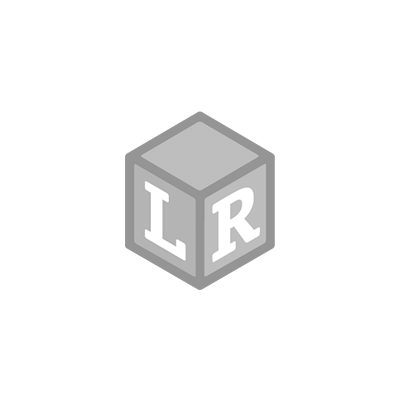

In a medium-sized saucepan, mix the water, oil, salt, cream of tartar, and a few drops of food coloring. Stir over medium heat until the mixture is warm and the salt is mostly dissolved, then remove from heat and blend in the flour. The better the flour is blended, the smoother the dough will be, so take your time. Then drop the mixture onto a sheet of wax paper and knead until smooth and soft. Now sculpt! This batch will last for several weeks, if not months. If it begins to dry or crumble, mix in a few drops of vegetable oil. Adding texture to your dough creates the perfect substance for tactile play. To make a textured dough, follow these Traditional Dough instructions, adding glitter, sea salt, or even sand to the saucepan before mixing with flour.
Ingredients:
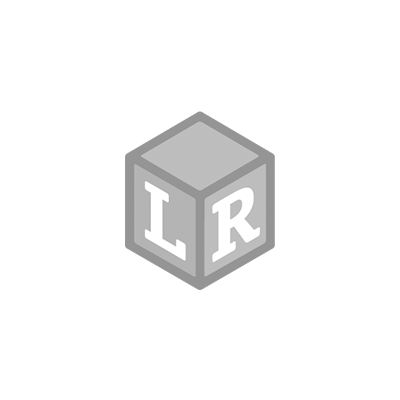

This version uses KOOL-AID to add color and scent to traditional dough. Whisk together the flour, salt, KOOL-AID, and cream of tartar in a saucepan, then mix in the water and oil. Heat over medium for about 5 minutes, stirring constantly. The mixture will start out really runny, but will begin to clump as it heats up. When the dough is mostly stuck together, dump the mixture onto a sheet of wax paper. Allow it to cool, then knead, play, and sniff your scented dough!
Ingredients:
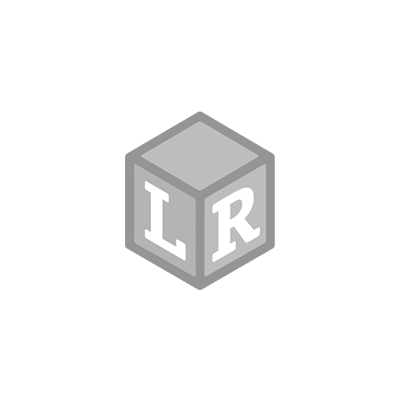

This simple, 3-ingredient recipe is totally kid-friendly – no heating on the stove! Pour the lotion into a bowl and mix in a few drops of food coloring. Next, blend in the corn starch with a little at a time, adding more corn starch until the mixture is silky smooth and not at all sticky. You may have to play with the ratios, adding more lotion to make the mixture less crumbly and then more starch to be less sticky, but this super soft, super smooth dough is worth the trouble. Added bonus – your hands will be silky soft after every session!
Ingredients:
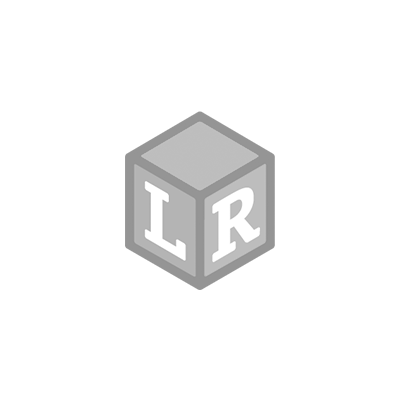



Technically, all of the recipes we’ve shared so far are edible, they just might not taste very good. Made with marshmallows, this recipe is not only edible – it’s delicious! Don’t let the corn starch fool you – when finished, this dough tastes just like taffy. In a pan, warm your oil over medium heat. Add about 30 large marshmallows, stirring until they’re completely dissolved. Add a few drops of food coloring, then move the mixture to a bowl. Quickly add the cornstarch and knead until soft. If the mixture still feels sticky, knead a bit more corn starch in until it’s smooth. This may take a bit of back and forth work – knead, corn starch, knead, corn starch. But once you’ve got the consistency just right, it’s time to play – or eat!
Playtime is out of this world! With so much in the news lately about NASA’s latest missions, not to mention the first ever image of a black hole recently released, space talk is certainly on the rise. How about making some play dough sure to spark otherworldly conversations about our galaxy?
Our home galaxy is called the Milky Way, and it contains hundreds of billions of stars that burn just like our own sun. That means there are most likely billions of solar systems out there just like ours. The Milky is believed to be 13.51 billion years old.
The Milky Way is about 100,000 light years in diameter. A light year is the distance light travels in one year. But according to scientists, the Milky Way is small compared to other galaxies. M87, another elliptical galaxy, is 980,000 light years in diameter.
Ingredients:
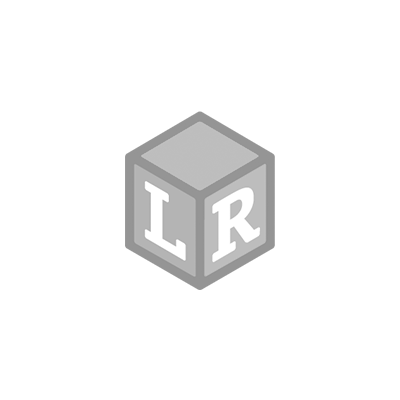

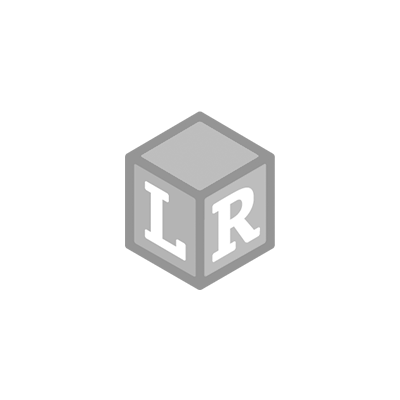

Adults only: get the water boiling on the stovetop. Have the kids mix the flour, salt, and cream of tartar Once your water is boiling, turn it off and remove it from the heat. Add the black food coloring. To get the deep, galaxy-black color, be prepared to use lots of food coloring, about half and ounce. The kids will love to see the food coloring billow into the hot water. Next, pour in the glycerin and baby oil. These two ingredients will prevent your dough from being too sticky. Adults only: pour the water mixture directly in to the bowl of the flour mixture and stir. Be aware of splashes since the water mixture is hot. Add glitter of your choice, and once again give it a good stir. Next, knead the dough for several minutes, really working it through. Dry hands work best. You might find that the dough is a little sticky. Throw the dough back in the bowl and sprinkle a little flour over the top and re-knead. This Milky Way dough is a blast to pull a part, twist, and pound out.
Does your kiddo love crafting with play dough? Save money and have some fun by making your own crafting play dough, together, at home! There are so many versions to try – from scented to textured to edible, there’s the perfect play dough recipe for every crafty kiddo. Follow our easy instructions below and give it a go today!
Ingredients:


In a medium-sized saucepan, mix the water, oil, salt, cream of tartar, and a few drops of food coloring. Stir over medium heat until the mixture is warm and the salt is mostly dissolved, then remove from heat and blend in the flour. The better the flour is blended, the smoother the dough will be, so take your time. Then drop the mixture onto a sheet of wax paper and knead until smooth and soft. Now sculpt! This batch will last for several weeks, if not months. If it begins to dry or crumble, mix in a few drops of vegetable oil. Adding texture to your dough creates the perfect substance for tactile play. To make a textured dough, follow these Traditional Dough instructions, adding glitter, sea salt, or even sand to the saucepan before mixing with flour.
Ingredients:


This version uses KOOL-AID to add color and scent to traditional dough. Whisk together the flour, salt, KOOL-AID, and cream of tartar in a saucepan, then mix in the water and oil. Heat over medium for about 5 minutes, stirring constantly. The mixture will start out really runny, but will begin to clump as it heats up. When the dough is mostly stuck together, dump the mixture onto a sheet of wax paper. Allow it to cool, then knead, play, and sniff your scented dough!
Ingredients:


This simple, 3-ingredient recipe is totally kid-friendly – no heating on the stove! Pour the lotion into a bowl and mix in a few drops of food coloring. Next, blend in the corn starch with a little at a time, adding more corn starch until the mixture is silky smooth and not at all sticky. You may have to play with the ratios, adding more lotion to make the mixture less crumbly and then more starch to be less sticky, but this super soft, super smooth dough is worth the trouble. Added bonus – your hands will be silky soft after every session!
Ingredients:




Technically, all of the recipes we’ve shared so far are edible, they just might not taste very good. Made with marshmallows, this recipe is not only edible – it’s delicious! Don’t let the corn starch fool you – when finished, this dough tastes just like taffy. In a pan, warm your oil over medium heat. Add about 30 large marshmallows, stirring until they’re completely dissolved. Add a few drops of food coloring, then move the mixture to a bowl. Quickly add the cornstarch and knead until soft. If the mixture still feels sticky, knead a bit more corn starch in until it’s smooth. This may take a bit of back and forth work – knead, corn starch, knead, corn starch. But once you’ve got the consistency just right, it’s time to play – or eat!
Playtime is out of this world! With so much in the news lately about NASA’s latest missions, not to mention the first ever image of a black hole recently released, space talk is certainly on the rise. How about making some play dough sure to spark otherworldly conversations about our galaxy?
Our home galaxy is called the Milky Way, and it contains hundreds of billions of stars that burn just like our own sun. That means there are most likely billions of solar systems out there just like ours. The Milky is believed to be 13.51 billion years old.
The Milky Way is about 100,000 light years in diameter. A light year is the distance light travels in one year. But according to scientists, the Milky Way is small compared to other galaxies. M87, another elliptical galaxy, is 980,000 light years in diameter.
Ingredients:




Adults only: get the water boiling on the stovetop. Have the kids mix the flour, salt, and cream of tartar Once your water is boiling, turn it off and remove it from the heat. Add the black food coloring. To get the deep, galaxy-black color, be prepared to use lots of food coloring, about half and ounce. The kids will love to see the food coloring billow into the hot water. Next, pour in the glycerin and baby oil. These two ingredients will prevent your dough from being too sticky. Adults only: pour the water mixture directly in to the bowl of the flour mixture and stir. Be aware of splashes since the water mixture is hot. Add glitter of your choice, and once again give it a good stir. Next, knead the dough for several minutes, really working it through. Dry hands work best. You might find that the dough is a little sticky. Throw the dough back in the bowl and sprinkle a little flour over the top and re-knead. This Milky Way dough is a blast to pull a part, twist, and pound out.
 The question to ask your scientist as you create: What representations of matter will we see as we make (and eat) the popsicles? What’s the matter?Combine 1/3 cup sugar and the dry lime gelatin in a bowl.What’s the matter? Solid!Add 1 cup boing water and 1 cup boiling water and stir two minutes.What’s the matter? Liquid AND gas from the steam!
The question to ask your scientist as you create: What representations of matter will we see as we make (and eat) the popsicles? What’s the matter?Combine 1/3 cup sugar and the dry lime gelatin in a bowl.What’s the matter? Solid!Add 1 cup boing water and 1 cup boiling water and stir two minutes.What’s the matter? Liquid AND gas from the steam! Fill a measuring cup with ½ cup cold water and add ice cubes until it reads ¾ of a cup. Add to the lime gelatin and stir until the ice is completely melted.What’s the matter? Liquid only! Gas is gone when the mixture cools down!Put the gelatin in the freezer for 20-30 minutes. Keep on eye on it. You will want a jelly-like consistency.Repeat the same process with the strawberry (or watermelon) gelatin, but don’t put the freezer just yet.
Fill a measuring cup with ½ cup cold water and add ice cubes until it reads ¾ of a cup. Add to the lime gelatin and stir until the ice is completely melted.What’s the matter? Liquid only! Gas is gone when the mixture cools down!Put the gelatin in the freezer for 20-30 minutes. Keep on eye on it. You will want a jelly-like consistency.Repeat the same process with the strawberry (or watermelon) gelatin, but don’t put the freezer just yet. Pour your red gelatin into the popsicle molds or paper cups. Now put in the freezer for 20 minutes only.
Pour your red gelatin into the popsicle molds or paper cups. Now put in the freezer for 20 minutes only. While your “watermelon” part of your popsicles are stiffening up, begin to make your “rind” by beating the cream cheese and remaining sugar with an electric mixer. Stir in the Cool Whip.
While your “watermelon” part of your popsicles are stiffening up, begin to make your “rind” by beating the cream cheese and remaining sugar with an electric mixer. Stir in the Cool Whip. What’s the matter? Tough one since it’s so fluffy, but definitely solid!
What’s the matter? Tough one since it’s so fluffy, but definitely solid! Pull your popsicle molds out of the freezer and grab your chocolate chip “seeds”. Push the chips down the red gelatin using the toothpick or skewer.
Pull your popsicle molds out of the freezer and grab your chocolate chip “seeds”. Push the chips down the red gelatin using the toothpick or skewer. What’s the matter? Gelatin…another tough one. A liquid that quickly became a semi-solid!Next, scoop your cream cheese mixture on top, followed by the lime gelatin.
What’s the matter? Gelatin…another tough one. A liquid that quickly became a semi-solid!Next, scoop your cream cheese mixture on top, followed by the lime gelatin. Keep in the freezer overnight.
Keep in the freezer overnight. Pull out this yummy cold treat on a hot day and discuss what is scientifically happening to the popsicle in the heat.What’s the matter? Steam comes off the cold popsicle when it hits the hot air, then turns to a liquid (unless you eat fast!).Enjoy!
Pull out this yummy cold treat on a hot day and discuss what is scientifically happening to the popsicle in the heat.What’s the matter? Steam comes off the cold popsicle when it hits the hot air, then turns to a liquid (unless you eat fast!).Enjoy! Recipe source: kraftrecipes.com
Recipe source: kraftrecipes.com  The question to ask your scientist as you create: What representations of matter will we see as we make (and eat) the popsicles? What’s the matter?Combine 1/3 cup sugar and the dry lime gelatin in a bowl.What’s the matter? Solid!Add 1 cup boing water and 1 cup boiling water and stir two minutes.What’s the matter? Liquid AND gas from the steam!
The question to ask your scientist as you create: What representations of matter will we see as we make (and eat) the popsicles? What’s the matter?Combine 1/3 cup sugar and the dry lime gelatin in a bowl.What’s the matter? Solid!Add 1 cup boing water and 1 cup boiling water and stir two minutes.What’s the matter? Liquid AND gas from the steam! Fill a measuring cup with ½ cup cold water and add ice cubes until it reads ¾ of a cup. Add to the lime gelatin and stir until the ice is completely melted.What’s the matter? Liquid only! Gas is gone when the mixture cools down!Put the gelatin in the freezer for 20-30 minutes. Keep on eye on it. You will want a jelly-like consistency.Repeat the same process with the strawberry (or watermelon) gelatin, but don’t put the freezer just yet.
Fill a measuring cup with ½ cup cold water and add ice cubes until it reads ¾ of a cup. Add to the lime gelatin and stir until the ice is completely melted.What’s the matter? Liquid only! Gas is gone when the mixture cools down!Put the gelatin in the freezer for 20-30 minutes. Keep on eye on it. You will want a jelly-like consistency.Repeat the same process with the strawberry (or watermelon) gelatin, but don’t put the freezer just yet. Pour your red gelatin into the popsicle molds or paper cups. Now put in the freezer for 20 minutes only.
Pour your red gelatin into the popsicle molds or paper cups. Now put in the freezer for 20 minutes only. While your “watermelon” part of your popsicles are stiffening up, begin to make your “rind” by beating the cream cheese and remaining sugar with an electric mixer. Stir in the Cool Whip.
While your “watermelon” part of your popsicles are stiffening up, begin to make your “rind” by beating the cream cheese and remaining sugar with an electric mixer. Stir in the Cool Whip. What’s the matter? Tough one since it’s so fluffy, but definitely solid!
What’s the matter? Tough one since it’s so fluffy, but definitely solid! Pull your popsicle molds out of the freezer and grab your chocolate chip “seeds”. Push the chips down the red gelatin using the toothpick or skewer.
Pull your popsicle molds out of the freezer and grab your chocolate chip “seeds”. Push the chips down the red gelatin using the toothpick or skewer. What’s the matter? Gelatin…another tough one. A liquid that quickly became a semi-solid!Next, scoop your cream cheese mixture on top, followed by the lime gelatin.
What’s the matter? Gelatin…another tough one. A liquid that quickly became a semi-solid!Next, scoop your cream cheese mixture on top, followed by the lime gelatin. Keep in the freezer overnight.
Keep in the freezer overnight. Pull out this yummy cold treat on a hot day and discuss what is scientifically happening to the popsicle in the heat.What’s the matter? Steam comes off the cold popsicle when it hits the hot air, then turns to a liquid (unless you eat fast!).Enjoy!
Pull out this yummy cold treat on a hot day and discuss what is scientifically happening to the popsicle in the heat.What’s the matter? Steam comes off the cold popsicle when it hits the hot air, then turns to a liquid (unless you eat fast!).Enjoy! Recipe source: kraftrecipes.com
READ MORE
Recipe source: kraftrecipes.com
READ MORE
A lot of fun art projects have a specific end product in mind, like the mini piñata craft and bubble wrap craftsI’ve previous shared with our readers. But sometimes it’s wonderful to offer your children a craft that’s open-ended, so they can enjoy the process of creating, without focusing on the finished product.
This craft is a favorite with my nieces and nephews, keeping them absorbed with two distinct, appealing steps. If you want to get fancy about it, you could certainly call this a “mixed media abstract art project,” where children focus their creative attention on shapes, colors, forms, and textures to achieve a beautiful effect. The kids just call it “yarn doodle art” and ask to do whenever they can!
An adult should cut 5 or 6 pieces of yarn, approximately a foot long each. You can cut shorter pieces for toddlers, which will be easier for them to work with. An adult should also pour a little of the glue into the bowl. You can add a very little bit of water to the glue to stretch it out. We also like to keep a cup of water on the table to dip the yarn in first. This just keeps the yarn from absorbing too much glue so we don’t run out.
Kids begin by dipping a piece of yarn in the bowl to fully cover it with glue. They can hold one end of the yarn as they swirl it in the glue, “smush” it around with their fingers, or use a plastic spoon to push the yarn around, depending on your tolerance for mess. Whichever way you choose, kids love this step since it feels to them like they’re getting away with doing something they shouldn’t!


Holding the piece of yarn by the end, drape it onto the paper then move your wrist and hand to make squiggles, swirls, spirals, or “loop-de-loops.” Toddlers can literally do a dry run by practicing with their yarn before they dip it in the glue, but most kids get the hang of this very quickly. Alternate colors of yarn for added visual interest. There’s no wrong way to do this step, so simply have fun and create! As a bonus, kids build their fine motor skills and eye hand coordination as they doodle.
Once all areas of the paper have some doodles, you can take your plastic spoon and gently tamp down on the yarn to make extra certain it sticks to the paper. Don’t worry if the glue looks messy at this point, it will dry clear in a few hours. Pro-tip: If you’re the kind of adult who enjoys the relaxing appeal of adult coloring books, go ahead and doodle some yarn on a paper yourself so you can join your kids in the next step, painting.
When the yarn dries, it’s time to break out the paint and paintbrushes! Now is a good time to have a look at the doodles and ask the kids what kinds of shapes they see. Do those shapes remind them of anything? In our example, the circles look a bit like swimming pools, and the spiral looks like a whirlpool, which suggests using various shades of blue for these shapes.
Another way to choose which paints to use is to talk about contrasting colors. In our example, in the upper right hand corner there are 2 loop-de-loops made by yellow yarn. Green makes a nice contrast to the yellow, so the yarn really seems to pop. Below, the bright orange paint has the same effect. You can encourage kids to see the different zones created by the yarn and alternate contrasting colors. Or simply let them choose their own favorite colors!
This project can be scaled up or down as well. If you’re pressed for time, you can have the kids just scribble their doodles with a thick marker or jumbo crayon, then color in the shapes with paint, crayons, or colored pencils. Feeling more ambitious? You can create a leaded, stained glass effect by substituting a piece of clear plastic acrylic for the paper and using black yarn for the doodles. Fill in with translucent paint or make your own clear “paint” by adding food dye to white school glue.
Though yarn doodle art really isn’t about the finished product, the paintings always seem to come out just beautiful. So make a little time to create…then make a little space on your fridge to display these kid-crafted masterpieces!
A lot of fun art projects have a specific end product in mind, like the mini piñata craft and bubble wrap craftsI’ve previous shared with our readers. But sometimes it’s wonderful to offer your children a craft that’s open-ended, so they can enjoy the process of creating, without focusing on the finished product.
This craft is a favorite with my nieces and nephews, keeping them absorbed with two distinct, appealing steps. If you want to get fancy about it, you could certainly call this a “mixed media abstract art project,” where children focus their creative attention on shapes, colors, forms, and textures to achieve a beautiful effect. The kids just call it “yarn doodle art” and ask to do whenever they can!
An adult should cut 5 or 6 pieces of yarn, approximately a foot long each. You can cut shorter pieces for toddlers, which will be easier for them to work with. An adult should also pour a little of the glue into the bowl. You can add a very little bit of water to the glue to stretch it out. We also like to keep a cup of water on the table to dip the yarn in first. This just keeps the yarn from absorbing too much glue so we don’t run out.
Kids begin by dipping a piece of yarn in the bowl to fully cover it with glue. They can hold one end of the yarn as they swirl it in the glue, “smush” it around with their fingers, or use a plastic spoon to push the yarn around, depending on your tolerance for mess. Whichever way you choose, kids love this step since it feels to them like they’re getting away with doing something they shouldn’t!


Holding the piece of yarn by the end, drape it onto the paper then move your wrist and hand to make squiggles, swirls, spirals, or “loop-de-loops.” Toddlers can literally do a dry run by practicing with their yarn before they dip it in the glue, but most kids get the hang of this very quickly. Alternate colors of yarn for added visual interest. There’s no wrong way to do this step, so simply have fun and create! As a bonus, kids build their fine motor skills and eye hand coordination as they doodle.
Once all areas of the paper have some doodles, you can take your plastic spoon and gently tamp down on the yarn to make extra certain it sticks to the paper. Don’t worry if the glue looks messy at this point, it will dry clear in a few hours. Pro-tip: If you’re the kind of adult who enjoys the relaxing appeal of adult coloring books, go ahead and doodle some yarn on a paper yourself so you can join your kids in the next step, painting.
When the yarn dries, it’s time to break out the paint and paintbrushes! Now is a good time to have a look at the doodles and ask the kids what kinds of shapes they see. Do those shapes remind them of anything? In our example, the circles look a bit like swimming pools, and the spiral looks like a whirlpool, which suggests using various shades of blue for these shapes.
Another way to choose which paints to use is to talk about contrasting colors. In our example, in the upper right hand corner there are 2 loop-de-loops made by yellow yarn. Green makes a nice contrast to the yellow, so the yarn really seems to pop. Below, the bright orange paint has the same effect. You can encourage kids to see the different zones created by the yarn and alternate contrasting colors. Or simply let them choose their own favorite colors!
This project can be scaled up or down as well. If you’re pressed for time, you can have the kids just scribble their doodles with a thick marker or jumbo crayon, then color in the shapes with paint, crayons, or colored pencils. Feeling more ambitious? You can create a leaded, stained glass effect by substituting a piece of clear plastic acrylic for the paper and using black yarn for the doodles. Fill in with translucent paint or make your own clear “paint” by adding food dye to white school glue.
Though yarn doodle art really isn’t about the finished product, the paintings always seem to come out just beautiful. So make a little time to create…then make a little space on your fridge to display these kid-crafted masterpieces!














 Shop UK Site
Shop UK Site